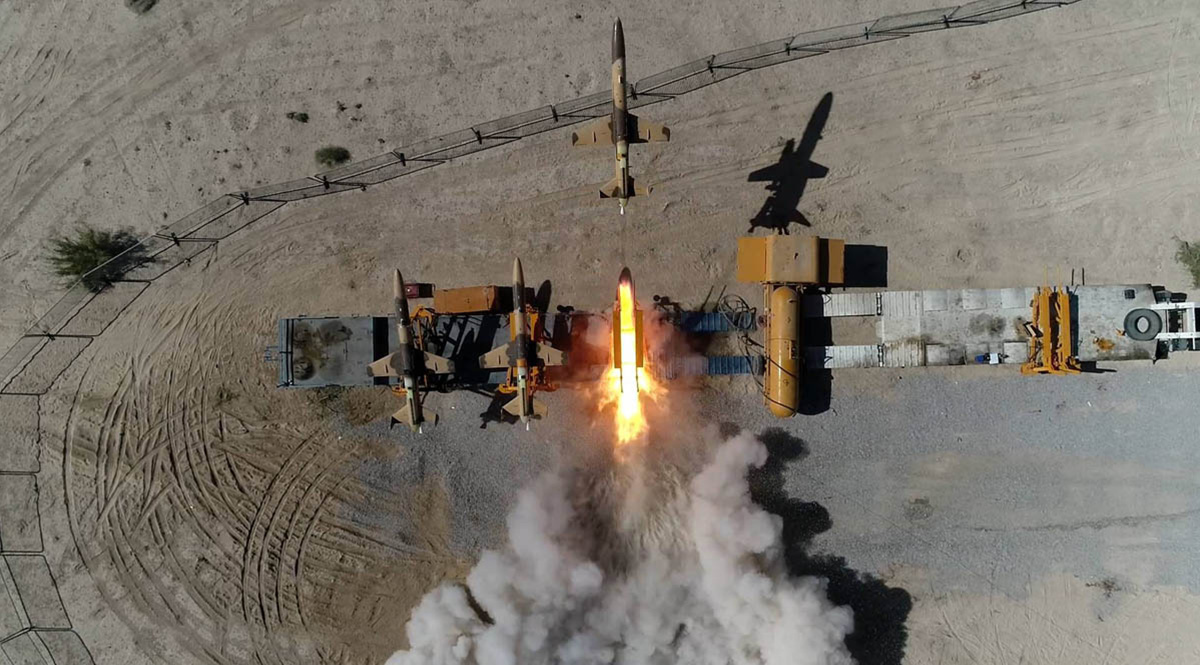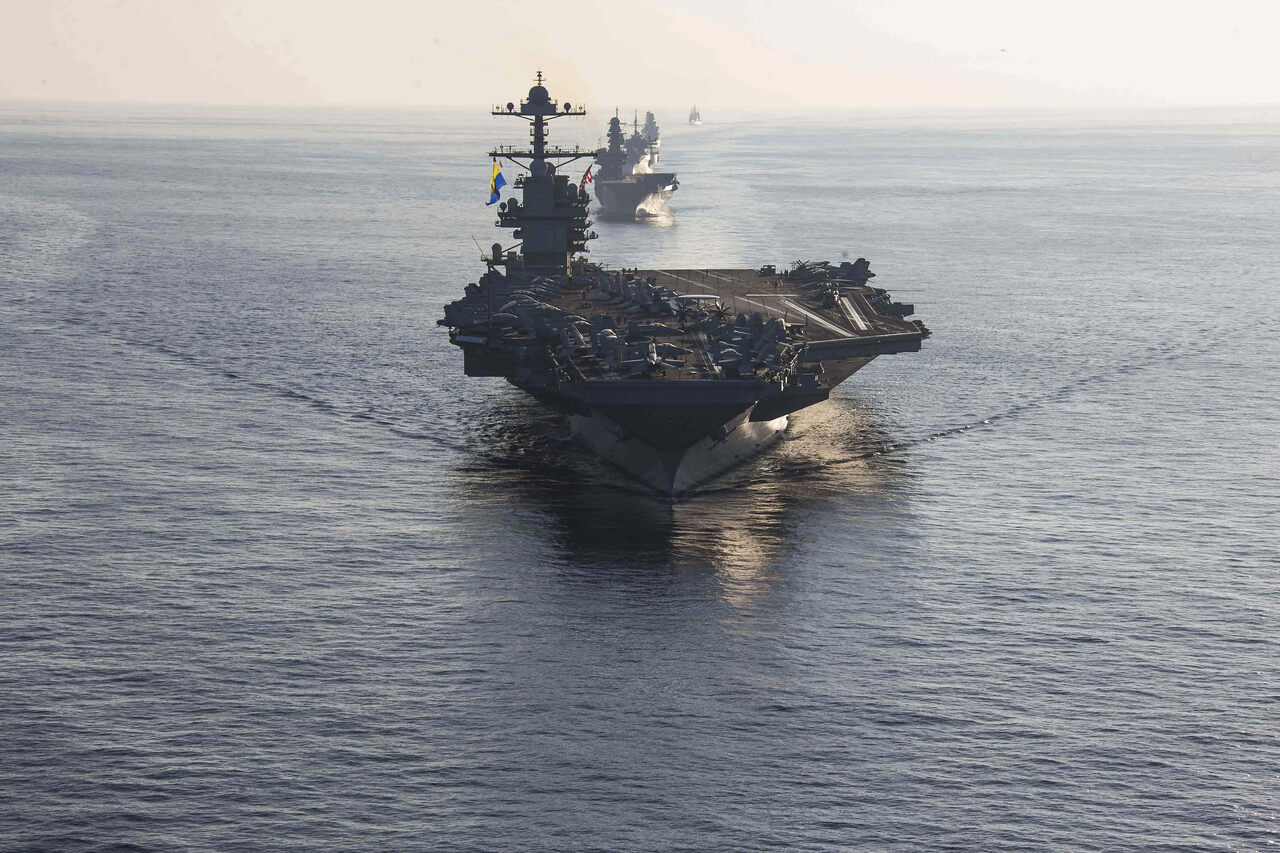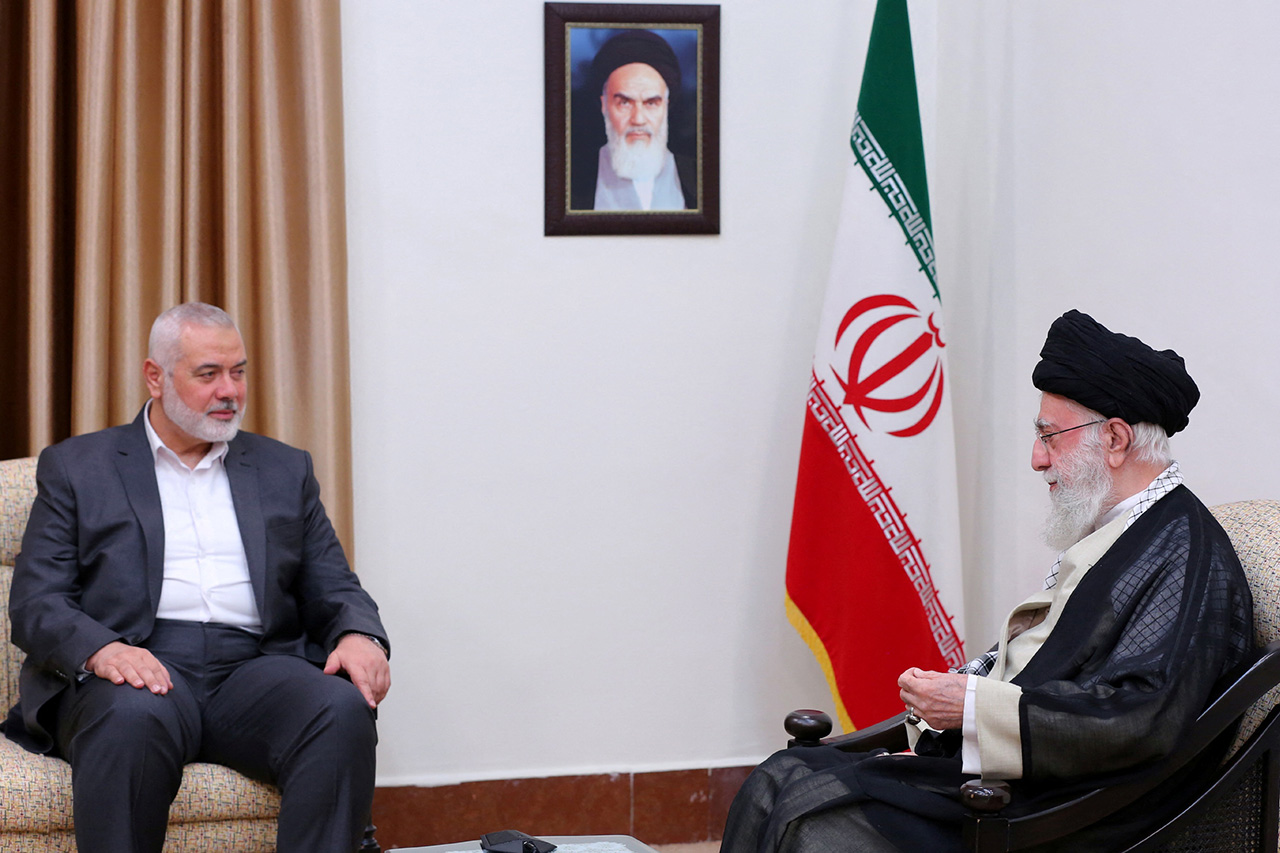U.S.-Iran Weighing Escalation in Yemen
U.S. strikes on pro-Iran rebels in Yemen are broad in scope but the Biden administration is not ready for a large-scale land operation in this country already largely been destroyed by a long civil war. Neither the U.S. nor Iran are interested in an open armed confrontation with each other, but Yemen has become yet another proxy conflict area. The degradation of Houthi threats in the context of ensuring security of Red Sea lines of communication and effective deterrence of Iran in the Middle East demand more decisive actions by the U.S. and the EU, both militarily and diplomatically.
 Iranian Army Office / Zuma Press / Forum
Iranian Army Office / Zuma Press / Forum
The U.S. with the support of several allies conducted 11 waves of strikes in Yemen between 12 and 31 January. They targeted the pro-Iranian Houthi rebel militia, which in the previous three months or so attacked about 30 civilian vessels in the Red Sea. The U.S. strikes have not halted the Houthi attacks and the Pentagon’s analysis of the broader Operation Poseidon Archer was leaked to media. The White House was presented with four main military options: air-missile strikes on a small scale, a longer campaign against the Houthi missile arsenal, amphibious assaults and the capture of ports in the west of Yemen, and even limited airstrikes in Iran.
Attempts to Strengthen U.S. Deterrence
The strikes in Yemen so far have targeted the Houthi’s coastal radars and observation points, airfields, and weapon storage. Their losses in helicopters, drones, ballistic, and cruise missiles should prevent more attacks on civilian and military vessels in the Red Sea, Gulf of Aden, and Bab al-Mandab Straits.
Poseidon Archer, supported on two occasions by the Royal Air Force, are not part of Operation Prosperity Guardian, initiated last December. Nevertheless the two formally separate missions serve similar goals, which are the demonstration of U.S. and allied military power and deterring the Houthis. The U.S. Navy also intensified checks of suspect ships in the Red Sea area, and on 11 January interdicted a small vessel transporting Iranian weapons and sub-parts for guided missiles (this was revealed on 16 January). Despite this evidence, high level civilian officials in the Biden administration have been very cautious and almost silent on the issue of Iran’s co-responsibility for the situation in Yemen and the region.
So far, the selection of targets in Poseidon Archer suggest a White House that is not ready to move on with a land operation in Yemen. Deployed ships and other U.S. and coalition assets seem to be capable of intercepting the majority of the Houthi drones and missiles. From a military perspective, defensive measures though are not enough, so a more systemic campaign of the degradation of the militia’s missile arsenal (especially mobile launchers) might be necessary, even if Arab states’ intervention in Yemen since 2015 has not accomplished this same goal. Also, the previous naval blockade of Yemen by an international task force of Combined Maritime Forces (39 member states) did not prevent or disrupt constant missile transfers from Iran by sea. Moreover, the Houthi are highly-loyal to Iran, illustrated in 2019 when they took responsibility for Iranian missile strikes on oil installations in Saudi Arabia, despite evidence they were launched from Iranian and Iraqi territory.
The next military responses by the U.S. and its allies might be limited by many political factors. The Houthi are more actively supporting Hamas after its terrorist attack on Israel, and have gained stronger support among the different Yemeni tribes and anti-Israeli inclined Arab societies. The U.S. cannot count on closer cooperation with Saudi Arabia, which seems to be interested more in de-escalating tensions with Iran, peace talks, and relative stabilisation of the Sunni regions of Yemen. U.S. actions in Yemen and the wider region are also complicated by the perception of it as Israel’s ultimate security guarantor and the upcoming presidential campaign. As well, the majority of European countries are focused on the Russia-Ukraine war.
Threat of Escalation from Iran and the Houthis
The limitations on U.S. actions in the region are so stark that even intensified strikes in Yemen might not halt attacks by Iran, the Houthis, and other Shia militias. For more than three decades, Iran has engaged in unconventional conflicts with the U.S. and Israel. In this “grey zone”, Iran has carefully chosen the time and place, as well as forces and means, which taken together mean they usually complicate the responses from its stronger rivals. Iran after the Hamas attack and war in Gaza Strip seems to accept Palestinian military defeat but it does not want to lose its image as the leader of anti-Israeli and anti-American forces (in the so-called Axis of Resistance). For these reasons, Iran is not encouraging Hezbollah to initiate another war with Israel. At the same time, the Lebanese Shia militia is conducting harassment of northern Israel, while accepting the loss of about 160 of its fighters in the border areas. Similarly, missile and drone strikes by the Houthis in the direction of Israel are so rare and ineffective that they are not provoking any Israeli revenge in Yemen or Iran.
Instead of the intense conflict with Israel, Iran is preferring escalation with and testing of the U.S. reactions. The Iranian authorities perceive the Americans as easily accessible targets without consequences of disproportionate revenge or preventive strikes on Iran itself. This approach since the beginning of war in Gaza has resulted so far in 165 different attacks on U.S. troops in Syria and Iraq by pro-Iranian militias. During this period, the U.S. has struck the militants only four times in Syria, compared to, for example, Israel stroke, which has hit back around 20 times. It was not until the end of 2023 when U.S. airplanes attacked the militants’ base in Iraq, which was then condemned by the many Iraqi Shia leaders and government in Baghdad. Iran then escalated even more, attacking with ballistic missiles on 17 January the U.S. consulate and troops in Iraqi Kurdistan. To confuse and complicate the U.S. response, this time Iran used the pretext of struggle with ISIS, and synchronised the strikes on Iraq with similar missile strikes in Syria and Pakistan. However, Pakistan reacted to this with “anti-terrorist” airstrikes in Iran, what, however, did not result in a bilateral escalation or crisis between the neighbours. The latest and most serious escalation by Iran was on 28 January when Iraqi militias on the Jordanian-Syrian border killed three U.S. military personnel and wounded more than 30.
These recent actions by pro-Iranian forces in Syria and Iraq suggest tolerance by Iran even for high loses among the Houthis. Also, Yemeni Shia leaders seem to be ready to sacrifice people and missiles as long as they do not lose control over the eastern provinces of Yemen. Iran is taking more risky steps due to the unresolved issue of its nuclear programme. Previous crises between Iran and the U.S. in the Persian Gulf suggest that the Iranians will de-escalate when the threat of full-scale war or internal instability emerges. But currently, Iran—even in the face of U.S. military pressure—might expect at least diplomatic support from Russia and China, both its “strategic partners”. It cannot be excluded that Iran might be ready to use the threat of terrorism again as another instrument of unconventional deterrence towards U.S. outside Yemen and other hotspots in the region. In this dimension, though, Hezbollah might be too weakened in Western countries than in the past, and as a military and terrorist group, now much more focused on the situation in the Levant. Using open sources, it is hard to assess the terrorist threat potential to the U.S. and EU from the Yemeni Shia diaspora.
Conclusion
The Biden administration is facing many challenges that are attractive opportunities for more aggressive steps by Iran and its allies in the wake of the war in Gaza. Iran is showing greater assertiveness, creativity, and more risk-taking than usual with the U.S. and has for many months been testing American reactions in many places in the Middle East. With the particular exception of Hezbollah, other pro-Iranian militias’ losses are not a high cost for the government of Iran. That calculus might be influenced and changed only with credible U.S. threats and actions towards Iran.
De-escalation might not be achieved without the visible determination of the U.S. Nevertheless, deep internal divisions and the situation within Yemen is preventing a change of the Poseidon Archer operation into a U.S. land forces intervention in this failed state. On the other hand, Iran is usually influenced by military power projection, as was the case during the previous U.S. operations in the Gulf, and the more than a decade of Israeli strikes on Iranians in Syria, and the recent exchange of strikes with Pakistan. For the U.S., striking military targets in Iran might be too risky or a last resort, but targeted killings of Iranian advisors in Yemen could be optimal. It could be implemented with continued U.S. strikes degrading the Houthi military potential as a way to restore more credible deterrence of Iran. The effectiveness of U.S. deterrence towards Iran could be augmented by a cyber campaign against the administration, economy, units of the Revolutionary Guards, and the Iranian defence industry.
Unilateral U.S. options should be replaced by a renewed and broader coalition like the ongoing Prosperity Guardian and the planned EU maritime mission in the region. Europe’s position also would be stronger with a review and changes of Union policy priorities towards Iran. So far, Europe, like the U.S., has been fully focused on the issue of Iran’s nuclear programme. The U.S. and EU policies towards Iran have received limited constructive response from China, which recently had some contribution to lowered Iranian-Saudi tensions. Another chance to influence the Iranian regime was missed during the massive and long protests by young Iranians, which were suppressed with the background of passive approaches by the U.S. and Europe. Another reason for reviewing European policies (more sanctions and lower level of diplomatic relations) is de facto alliance between Iran and Russia and Iranian weapon transfers facilitating the war in Ukraine.





